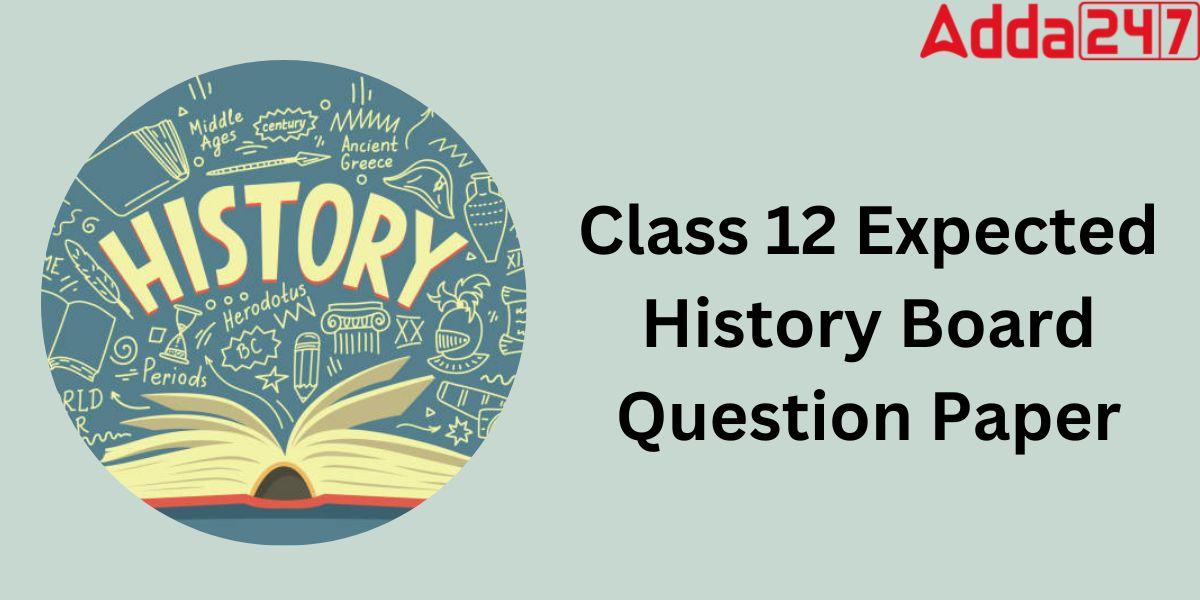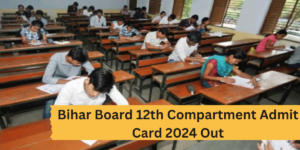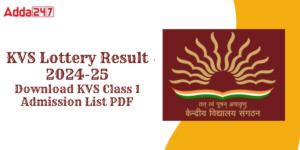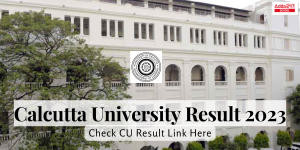Table of Contents
Solving the expected Class 12 History board paper 2024 will give a huge boost to the confidence level of the students who are going to take the board exam this year. The Class 12 History Board paper 2024 will be highly important, especially for students wanting to study the subject in their undergraduate program. Solving the expected history paper will help students increase their overall marks in the exam.
To aid students in their preparation journey for the board exam, our expert team has prepared the board exam paper 2024 of the History subject that is most likely to be asked in the upcoming board examination. The Class 12 History expected board exam paper along with their solutions have been provided based on the latest exam pattern.
Class 12 History Board Paper 2024- Expected
Expected Class 12 History Board Paper 2023: The CBSE Class 12 History Examination will be held on March 28, 2024. Thus, we need to improve our performance in the Class 12 History board exam immediately as the board exam is just months away. In order to be prepared for questions in the test room, students should spend as much time as possible practicing with the expected Class 12 History Board Paper 2024.
Our Adda247 Expert faculty offers the Expected Class 12 History Board Paper 2024 for the convenience of class 12 candidates. This paper is based on the proper CBSE Class 12 Exam pattern. The Expected Class 12 History Board Paper 2024 should be reviewed by students who intend to take the Class 12 History Board Exam in 2024, and they should then check their solutions against the provided solution key.
Complete Class 12 History Full Revision
Below we have provided the class 12 history revision video through 100 most important multiple choice questions that are likely to be featured in the board exam.
Class 12 History Board Paper 2024 Pattern
Similar to the actual CBSE Class 12 History sample paper, the Adda247 Class 12 History Board Paper 2024 has a maximum score of 80. The question paper must be completed in three hours by the applicants. The five sections of the Class 12 History Board Exam 2024 are represented by the letters A through E. The Expected Class 12 History Board Paper 2024 comprises 34 questions.
CBSE Class 12 History Syllabus 2023-24 Pdf Download
- Section A consists of 21 MCQs worth one mark each.
- Section B – Questions 22–27 are Brief Answer Type Questions for 3 marks each.
- Section C – Questions 28 to 30 are Long Answer Type Questions for 8 marks. Answer to each \ question should not exceed 300-350 words
- Section D – consists of 31 to 33 source-based questions, each with three sub-questions and four marks.
- Section-E – Question No. 34 is a map-based question worth 5 marks that comprises the identification and location of relevant test elements.
Expected Class 12 History Board Paper 2024 Section A
SECTION-A ( MCQ Type Questions 1X21=21)
1. Who is considered to be the father of Indian archaeology?
(a) Nigali Sagar
(b) Georg Buhler
(c) M.Cunningham
(d) Alexander Cunningham
2. Kalibanga site is located in which district of Rajasthan?
(a) Bhilwara
(b) Chittorgarh
(c) Hanumangarh
(d) Jhalawar
3. The historic site of Sanchi stupa is located in which state?
(a) Madhya Pradesh
(b) Rajasthan
(c) Bihar
(d) Gujarat
4. Match the following and choose the appropriate option:
| List-1 | List-2 |
| 1. Al-Biruni | a. Iran |
| 2. Ibn Battuta | b. Khwarizm |
| 3. Francois Bernier | c. Moroccan |
| 4. Abdul Razzaq | d. Frenchman |
Option
A. 1 – b, 2- c, 3 -d, 4- a
B. 1( a), 2-(d), 3 (c), 4 (b)
C. 1 – c, 2- b, 3 -d, 4- a
D. 1 – d, 2- a, 3 -b, 4- c
5. Harappa is located in …………… district of the Modern day Punjab province of Pakistan.
(a) Abbottabad
(b) Montgomery
(c) Hafizabad
(d) Jafarabad
6. Which of these rivers was the major source of water for Vijayanagar Empire?
(a) Tungabhadra
(b) Krishna
(c) Kaveri
(d) None of these
7. Given below are two statements, one labeled as Assertion(A) and the otherlabeled as Reason (R).
Assertion (A): Pilgrimages to the tombs of Sufi saints, known as ziyarat, are common throughout the Muslim world.
Reason (R): The khanqah was the center point of social life.
(a) Both (A) and (R) are correct, with (R) providing the correct explanation (A)
(b) Both (A) and (R) are right, but (R) does not explain (A) correctly
(c) (A) is correct, but (R) is not. (d) (R) is correct; however, (A) is incorrect.
(c) (A) is correct, but (R) is not correct
(d) (R) is correct, but (A) is not correct
8. Choose one of the following choices to identify the given image:

Options:
(a) Sanchi stupa
(b) Mahabodhi Stupa
(c) Shanti Stupa
(d) Maha Stupa
9. Which of the following dynasties ruled Vijayanagar Empire?
(a) Saluva dynasty
(b) Tuluva dynasty
(c) Sangam dynasty
(d) All of the above
10. Arrange the following in chronological order:
I. Lord Mountbatten arrived in India
II. Shimla conference
III. Cabinet Mission came to India
IV. Muslim League demanded Pakistan
Options:
(a) I, II, III & IV
(b) II, III, IV & I
(c) III, II, I & IV
(d) IV, II, I & III
11 Determine which of the following pairings is correctly matched:
(a) Lord Dalhousie: Doctrine of Lapse
(b) Quit India Movement: 1942
(c) Indian Constitution is signed: in 1949
(d) All of the above
12. The Indian Constitution came into effect on _________
(a) 15 august 1950
(b) 26 January 1950
(c) 26 January 1952
(d) 26 January 1947
13. Who was the Chairman of the Drafting Committee of the Constitution?
(a) Rajendra Prasad
(b) Dr. B.R. Ambedkar
(c) J. B. Kripalani
(d) Mahatma Gandhi
14. Who was known as Frontier Gandhi?
(a) Mahatma Gandhi
(b) Vallabh Bhai Patel
(c) Khan Abdul Gaffar Khan
(d) Maulana Abul Kalam
15. From where did the revolt of 1857 start?
(a) Jhansi
(b) Lucknow
(c) Ara
(d) Meerut
16. When was the Permanent Settlement introduced in Bengal?
(a) 1784
(b) 1793
(c) 1813
(d) 1852
17. Damin-i-Koh is in the area of which districts in Jharkhand?
(a) Sahibganj
(b) Godda
(c) pakur
(d) None of these
18. Which of the following was the Santhal rebellion’s leader?
(a) Sidhu
(b) Kanhu
(c) Birsa Munda
(d) a and b
19. Which Mughal emperor made Persian the court language?
(a) Akbar
(b) Aurangzeb
(c) Babar
(d) Jahangir
20. Which of the following languages is mixed into Urdu??
(a) Persian and Hindi
(b) Hindi and Persian
(c) Persian and Bengali
(d) None of these
21. Which of the following crops arrived in India via Africa and Spain?
(a) Paddy
(b) Wheat
(c) Maize
(d) None of these
CUET 2023 (प्रतिज्ञा Batch) For Arts Domain Subjects Online Live Classes
Expected Class 12 History Board Exam Paper 2024
SECTION -B
22. What do you understand by the Carbon-14 method?
OR
Describe any three features of the Harrappan drainage system.
23. Write a short note on Milind Pannah.
24. Write the political features of the Mahajanapada era.
25. Describe the features of water resources of the Vijayanagar empire.
26. Briefly explain the caste system of ancient Indian society.
27. “Art and literature helped in keeping alive the memory of 1857.” Explain with examples from the Indian
perspective.
OR
Write a short note on ‘Nalanda’.
Expected Class 12 History Question Paper 2024 Section C
SECTION-C
28. What do you understand by the Permanent Settlement Act? Describe its advantages and disadvantages.
OR
Describe the main features of the city-building of the Harappan civilization.
29. Describe the various sources of study of ancient Indian history.
OR
What do you understand by the Vedic period? Describe the civilization of that period.
30. Explain the main characteristics of the Indian Independence Act of 1947.
OR
Discuss the role of Mahatma Gandhi in the Indian National Movement.
Class 12 History Board Exam Paper Long Questions
Below we have provided the detailed video on all the important long questions that are important for the Class 12 Board exam in 2024.
Class 12 History Board Exam Paper 2024 Section D
SECTION-D
31. Read the following source carefully and answer the questions that follow:
The greatest emperors of India, Ashoka, the instigator of the Maurya dynasty laid the foundation stone of Shanti Stupa. In the third century BCE, he commissioned the construction of Stupas to disperse Lord Buddha’s earthly remains. This massive hemispherical dome stands 54 feet tall and contains a center chamber containing Buddha’s remains. It is a small village located on a hill near Sanchi in the Raisen district of Madhya Pradesh state, India. It is located in the central part of Madhya Pradesh, on the banks of the Betwa River, 46 km northeast of Bhopal, and 10 km from Besnagar and Vidisha.
Its nucleus is a hemispherical brick structure and made on the basis of the remains of the Buddha . It is also crowned with an umbrella; this umbrella represents the greatness of the Buddha. A pillar adorned withgems has also been installed there. The upper part of the pillar is also placed in the canopy nearby. This pillar was the inscription of Ashoka and it also includes jewelry made of conch shell script during the time of Gupta. The initial stupa was destroyed and vandalized by Pushyamitra Shunga, and it was restored by his son Agnimitra.
Later during the reign of Shunga, the stupa was decorated with stones and now the stupa had become even more massive than its original size. Sanchi Stupa is considered very ancient in India. For the people of Buddhism, it is like a holy pilgrimage. The Stupas of Sanchi are considered to be symbols of peace, sacredness, religion, and courage. Emperor Ashoka built it for the propagation of Buddhism.
1. Where is the Sanchi Stupa located?
2. By whom was the foundation stone of Shanti Stupa laid?
3. Which ruler had damaged and vandalized the original stupa?
32. Read the following source carefully and answer the questions that follow:
Vijayanagara Empire (about 1350 AD to 1565 AD) literally means ‘city of victory’. Often this city is considered to be the first Hindu kingdom of the medieval period. The Vijayanagara Empire, which arose in the 14th century, is said to be a transitional period between the medieval and modern colonial periods. This empire was established in 1336 AD as a result of the political and cultural movement against the Tughlaq power in South India by the Sangam sons Harihar Raya and Bukka Raya in front of the Anegundi fort situated on the northern bank of the Tungabhadra river. In this adventure, he got inspiration from Brahmin scholar Madhav Vidyaranya and the famous commentator of Vedas ‘Sayana’. The Vijayanagara Empire was named after its capital situated on the south bank of the Tungabhadra River. His capital was a symbol of immense power and wealth.
1. By whom was the Vijayanagara Empire established?
2. On the banks of which river was the Vijayanagara Empire established?
3. When was the Vijayanagara Empire established?
33. Read the following source carefully and answer the questions that follow:
Al-Biruni was a Persian scholar, writer, scientist, theologian, and thinker. He was a resident of ‘Rabiwa’. It was born in ‘Khwarizm’. His real name was ‘Abu Raihan Muhammad’, but he is more famous by the name of Al-Biruni’, which means ‘master’. In 1017 AD, Khwarizm was conquered by Mahmud Ghaznavi. Al-Biruni was brought as a prisoner to Ghazni before Sultan Mahmud Ghaznavi. Impressed by his scholarship, Mahmud Ghaznavi appointed him the ‘Raj Astrologer’ of his state. Alberuni had also composed a book named ‘Kitab-ul-Hind’. Al-Biruni was a master of Arabic, Persian, Turkish, Sanskrit, Mathematics, and Astronomy.
‘Kitab ul Hind’ was the most popular book among the total 14 books composed by Al-Biruni. This book of his is considered the main source of the history of South Asia. Al-Biruni came to India with the army of Sultan Mahmud Ghaznavi and stayed in Punjab for many years. He was a great scholar. While living in India, he studied Sanskrit very fondly as a subject and also studied Hindu philosophy and other scriptures deeply. On the basis of this study, he composed a book named ‘Tahkeek-e-Hind’ (Discovery of India). In this book, the history, character, conduct, traditions, and scientific knowledge of Hindus have been described in detail.
1. Where was Al-Biruni born?
2. When was ‘Khwarizm’ conquered by Mahmud Ghaznavi?
3. Who was appointed by Mahmud Ghaznavi as the ‘Raj Astrologer’ of his kingdom?
Class 12 History Board Exam Paper 2024 Section E
SECTION-E
(34.1) On the given political map of India, locate and label the following with appropriate symbols:

I. Sanchi stupa
II. Rakhigarhi- Indus Valley Site
III. Buddhist Sites: Nagarjunakonda
OR
Vijayanagar- Capital of Vijayanagar empire
(34.2) On the same outline map, two places have been marked as ‘A and B, as the centers of the Revolt of 1857 Identify them and write their correct names on the lines drawn near them.

Note: The following questions are for the Visually Impaired Candidates onlyin lieu of Q.No.34
1. Mention any two sites of the mature Harrappan period.
2. Centers of the National Movement: Champaran
or
Name the capital of the Vijayanagar empire.
3. Mention any two centers of the Revolt of 1857.
Class 12 Board History Exam Paper- With Solutions
We also provide you with complete detailed solutions to the History Board Exam Paper 2024. Students can review their marks after taking the Expected Class 12 History board paper 2024.
| Class 12 History Expected Question Paper With Solutions Download |
Class 12 History Expected Question Paper 2024 With Solutions Video
The detailed video of the CBSE Class 12 History official sample paper 2023-24 is given below. The detailed video solution will help students secure good marks in the real board exam paper 2024.





 Bihar Board 12th Compartment Admit Card ...
Bihar Board 12th Compartment Admit Card ...
 KVS Lottery Result 2024 25 Out, Kendriya...
KVS Lottery Result 2024 25 Out, Kendriya...
 CU Result 2024, Calcutta University 5th ...
CU Result 2024, Calcutta University 5th ...














